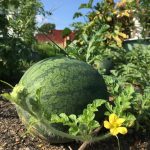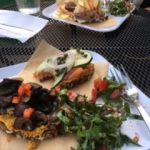The GDA is wowed by the number of our member restaurants who have their own grow their own food, from herbs grown in containers on the patio to large-scale operations. Winslow’s Home’s Farm has the biggest farm of any GDA restaurant, with 7 acres of farmland, 4 acres of which is production space with nearly 2 acres of beds full of annuals planted for this season. The farm is so large that it requires live-in caretakers: Kasey Peters and Trevis Charmichael.
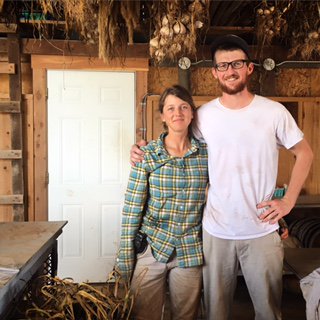
Caretaker farmers Peters and Charmichael.
Both Peters and Charmichael have experience in Food Justice, having worked on a nonprofit farm in Baltimore that supported a CSA and farmer’s markets in low-income neighborhoods. They now watch over the sprawling land that produces fresh fruit, vegetables, and eggs for the restaurant.
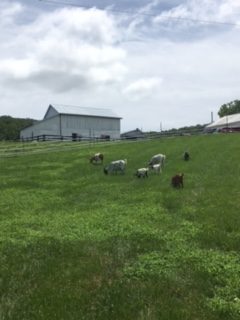
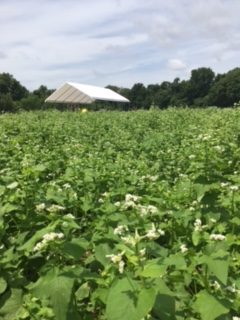
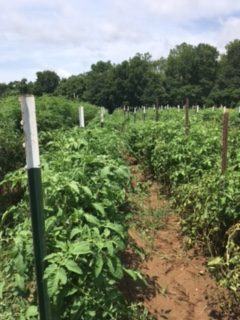
The GDA hitched a lift with one of Winslow’s Home’s expert bakers, Joe Stein. We got pretty lost, both on the trip there and on the return trip, and had plenty of time to take in the Missouri countryside’s rolling hills while we searched for the farm. The property itself covers over 180 acres, mostly pasture for cattle and their lake, which is stocked with catfish, bass, and bluegill.
Peters and Charmichael brought their 16 myotonic goats, (yes – the fainting kind!) many of whom were babies (to the delight of the GDA), a sheep, and a house-cat to live with them on the farm. Sampson, the father of the baby goats, impressed the GDA with his long, handsome beard and spiral horns.
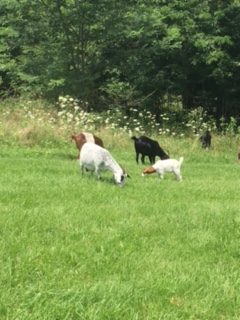
Baby goats chow down.

Handsome Sampson

Peters and Charmichael pick blackberries after the goats eat their fill of leaves.
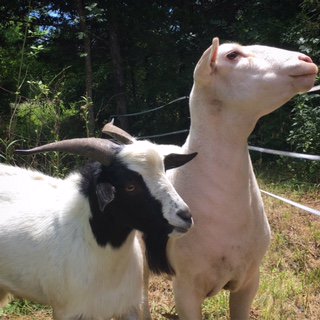
More handsome creatures.
Around 70 chickens wander around the farm with complete impunity – they’re the most cageless cage-free chickens around.
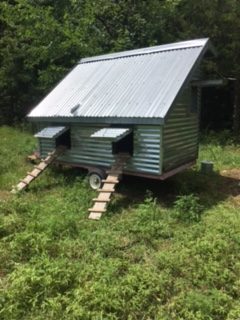
Chickens come and go as they please.
I learned of the farm through Stein, who explained that Winslow’s Home offers employees the opportunity to spend a shift working at the farm, learning about the food they serve and getting a break from the daily restaurant grind. Despite varying degrees of expertise in the great outdoors, the kitchen and wait staff are always an asset to the farmers, especially when it comes to weeding. “Getting help makes a huge difference,” Charmichael said. “Weeding this huge property can be demoralizing.” The task goes much quicker with more people – it becomes a fun activity, rewarded with a big meal made with ingredients sourced on the site.
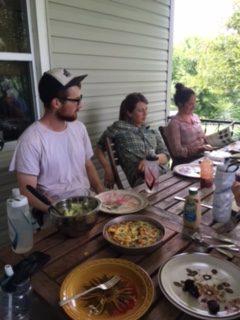
The crew enjoys a post-harvest, hearty meal.
Learning the craft of picking between weeds and starters can be tricky. “There’s definitely a learning curve,” Stein explained, “but towards the end of the day you’re really picking. They (Peters and Charmichal) are really helpful and make it easy – you gain knowledge as you go.”
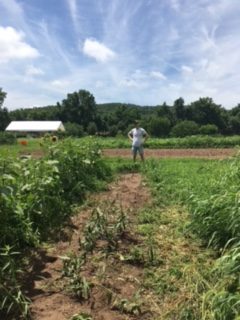
Joe Stein on the farm.
The farm is incredibly environmentally responsible; the produce is raised with organic principles, which involves preventive treatment and thoughtful planning. The herd of goats is kept in place with solar powered electric fences, placed strategically around the wild blackberry bushes so the goats can chow down on the leaves, making berry picking much easier for their human farm-mates.

Solar panel for the electric fence.

Compost piles keep a closed loop of organic material on the farm.

Winslow’s Home grows their own flowers for their restaurant which help provide habitat for pollinators.
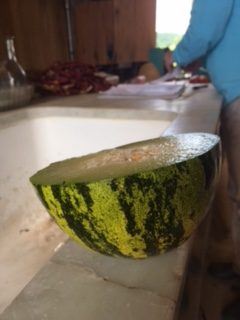
Taste-testing fresh cut melons.
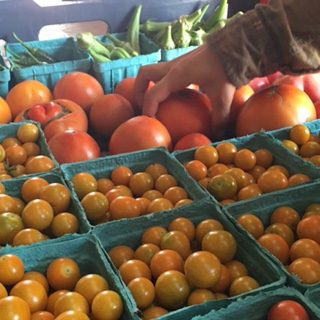
Testing tomatoes.
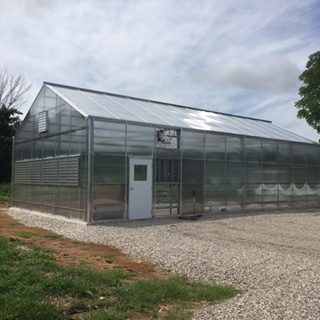
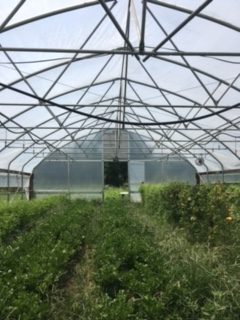
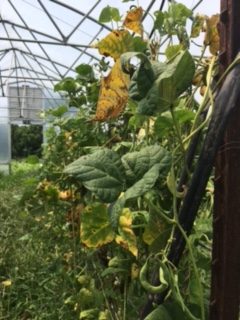
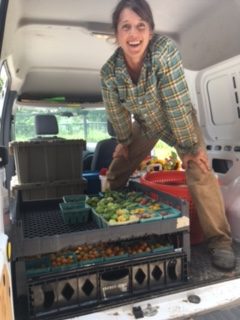
Peters loads up the truck headed for the restaurant.
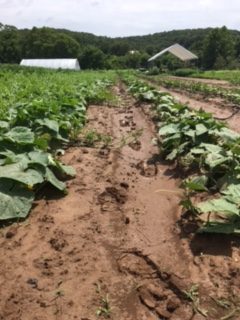
The GDA got a little muddy, but it was worth it.



